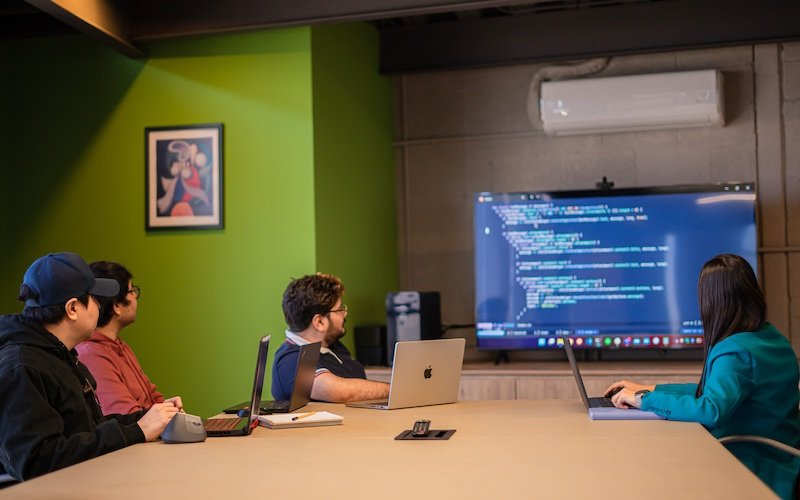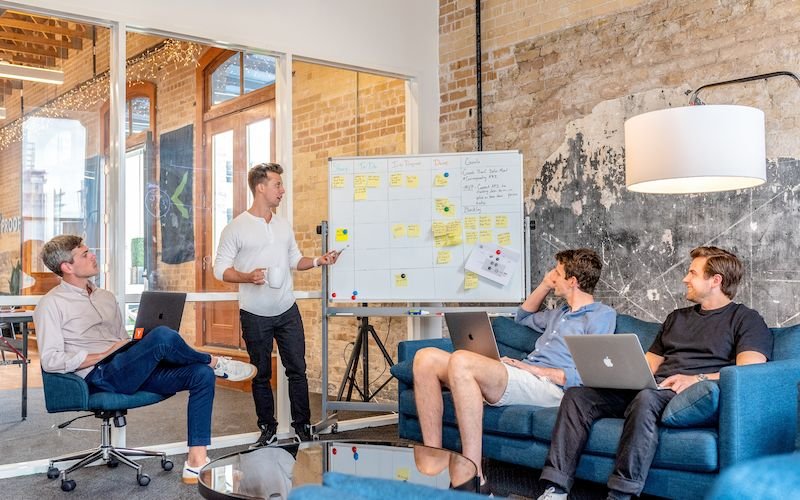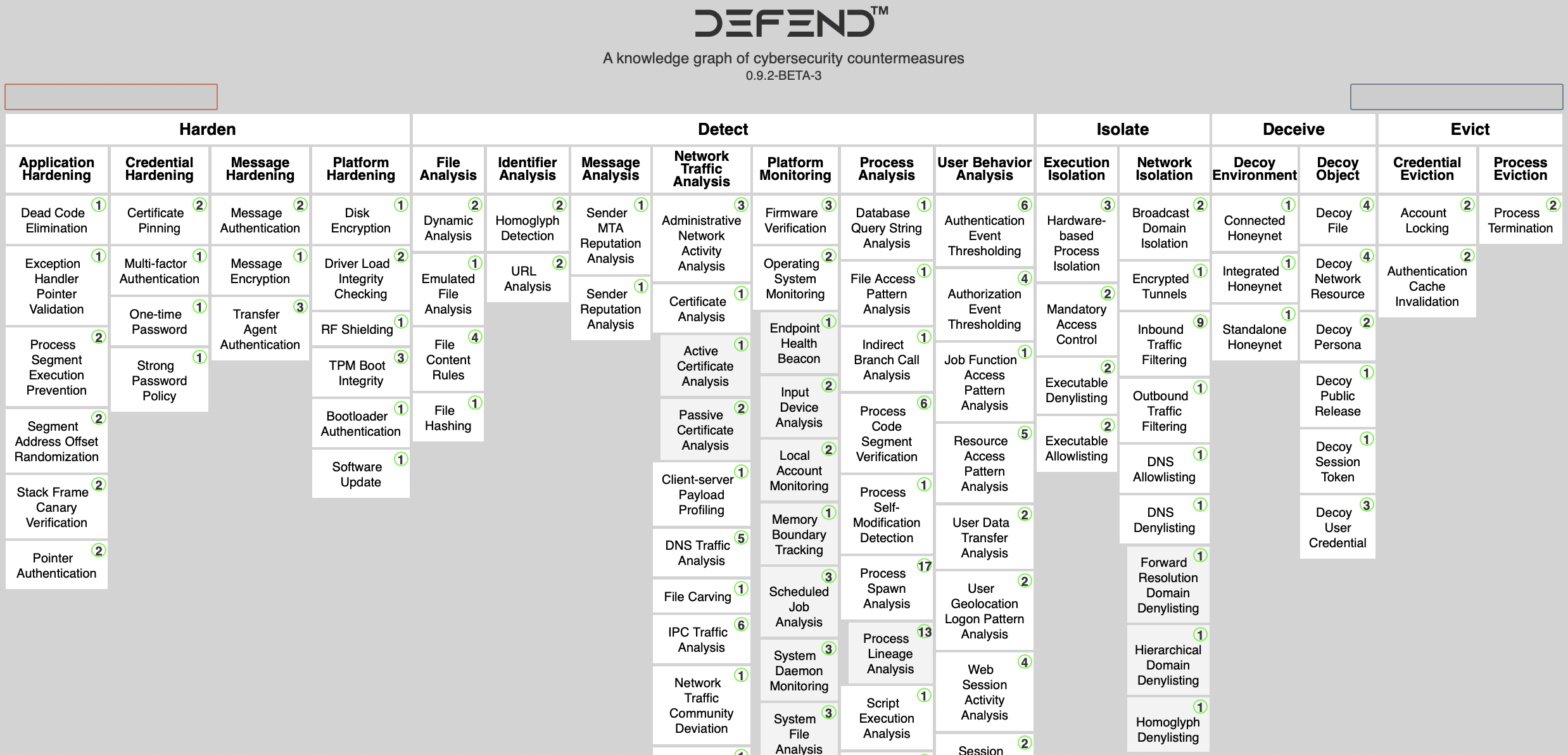
The importance of balance, leadership, and communication in QA: A chat with Team Lead Ángeles Banda.
Curated by: Sergio A. Martínez
The software industry has never been the same since the advent of remote work. Before this, it was expected to be present in an office full of computers and development materials to get projects done, which meant that, for most teams, productivity and collaboration were limited by how far members could physically travel or commute. But at the outbreak of the COVID pandemic, the software industry had to adapt quickly to push work and collaboration online to keep business running beyond physical walls. And most developers had to learn new ways to stay productive from home – many being able to access their work applications remotely for the first time.
Of course, remote work was something that had already existed prior to the pandemic, but this crisis pushed a lot of Tech companies into developing innovative digital solutions almost overnight, bringing unprecedented dynamism to the software industry. Now, it’s normal for many software professionals to access their work from any corner of the world, and companies benefit from this by being able to look outside their neighborhood to find top talent, instead of confining themselves to a local workforce that is more sought after each passing day.
However, this has not been an easy change. Working from home as a software developer can present unique challenges when it comes to maintaining a balance, which often means finding creative ways to integrate personal time into an already busy work schedule. Being able to work remotely, of course, gives plenty of flexibility when it comes to managing the daily tasks at hand, and stuff that used to require commuting or travel can easily be completed online, but this has created the side-effect of blurring the lines between work and personal life in a way that many people hadn’t experienced before. When work is at home, separation is difficult to preserve.
So yeah, managing a healthy work-life balance as a software developer working from home can be tricky. The key is to figure out ways to use this flexibility in your favor, by making sure that you plan and allocate enough time for each activity throughout the day – be it coding, hanging out with family, having meals together, or taking some time out for yourself. For this reason, we had a chat with Ángeles Banda, QA Analyst and Team Lead at Scio, whose experience balancing work, leadership, and family life can shed a light on the challenges of remote work and software development in the remote age.
A sudden change

For a parent trying to work from home, the challenge of software development on top of childcare can seem daunting. Working on complex developmental projects requires laser focus, whereas being available for kids calls for complete attention and availability too, which can be hard to find all in the same day, never mind during a complicated situation like a pandemic going on. How to achieve that?
“The pandemic was a big game-changer in my life, not only because I started to work remotely back then, but because my child was born in 2020, barely a month before the lockdowns began. I was still on maternity leave when world came down that we would not be back to the office for a while”, says Ángeles about those days. “And that was good at first because all daycares had to close down, so I got the chance to be with my child during those first few months, but then I had to think of a way to take care of him while I worked. His dad is also on the same schedule, so it was a tricky thing to balance, and we had to figure it out as we went.”
Of course, Ángeles wasn’t alone in that. According to a study by Rutgers University, “prior to the pandemic, the percent of men who provided at least five daily hours of active childcare was 15%, but increased to 29% during the pandemic. For women, this percentage was 23% prior to the pandemic and increased to 37% during the pandemic”, meaning that it had to be a meaningful change in how work and personal time dynamics had to be managed to keep productivity during the early stages of the pandemic and onward. And this often requires some creative thinking.
“What I tried to do was change my schedule and work hours to suit what I was doing at home. For example, I worked from 9:00 am to 6:00 pm, but I had to start earlier, at 7:00 am or so, when my child was asleep, so I could get some work done by the time he was awake”, continues Ángeles. “My husband and I also had to balance and schedule any call or meeting we needed to have carefully, trying to always have one of us free in case the baby needed something. It’s interesting to note how deeply your priorities change in this situation, so striking the correct balance was essential.”
Leading from afar
Furthermore, remote teams come with their own unique set of challenges when it comes to keeping productivity, and the key to successful collaboration is strong leadership that understands how to direct team members, assign tasks, and manage expectations. Good leaders find ways to keep the team engaged even though they can’t be physically present in the same location, encouraging constant communication to ensure everyone stays focused on deadlines and deliverables. With clear direction and regular updates, remote teams can accomplish great feats of software development, but achieving that requires a kind of skill that gets tested during a lockdown.
“This process had kind of a steep learning curve because, while I was trying to adapt my work at home with being a new mom, an opportunity for growth came along almost at the same time”, tells Ángeles. “I began as a Team Lead at the time, so trying to balance all of these new responsibilities was stressful, but it also comes down to the kind of team you have. I always try to keep things a little more personal, trying to know my teammates as people, which gives you certain flexibility to work more comfortably. Still, there were moments when communication didn’t work perfectly, so I had to iron out any bump in the team dynamics. I always try to solve these issues internally, talking directly to people and trying to keep our goals clear, and as time went on, we settle on something we all feel satisfied with.”
Remote teams that need to collaborate and lead from afar often have a more difficult time juggling expectations. So, to ensure successful projects, effective virtual leadership should focus on cultivating relationships as well as fostering an open communication platform between team members, which is what Ángeles learned to do. Leaders should strive to lay out clear goals, create consistent check-ins, maintain morale with recognition of individual team performance when needed, and openly invite both questions and feedback so everyone is on the same page. That way, developing a strong relationship among all members of the team can greatly increase the chances for success and make sure the development process remains efficient without compromising quality. When managed well, remote teams in software development can become a stabilizing force even during times of uncertainty.
Assuring quality at every step

With that in mind, we don’t need to explain how software development is tricky enough as it is. But throw in remote QA and you have a whole additional challenge. Quality assurance is an indispensable part of ensuring the final product meets the predetermined standards, but doing this remotely presents its own unique set of hurdles, like the difficulty of gauging the effectiveness and accuracy of a test while also adhering to time constraints and deadlines. Fortunately, there are ways to make these remote QA scenarios run more smoothly such as adopting automated testing strategies, employing communication tools that bridge gaps between team members, and staying organized even when managing a widely dispersed team. With careful planning and the necessary support, software development teams can navigate through the challenge of doing distributed QA with efficiency.
“I think the biggest help for the QA team was the openness of Scio to let us have all the equipment and everything we needed at home”, explains Ángeles. “It’s not like we could request absolutely anything we wanted, of course, but things like this iPhone or this Mac I have right here with me, even if I only use them to test applications and programs, made a big difference. I think it would have been easy to make us go to the office if we needed to make tests with these machines, but Scio made the effort of bringing all these resources to our home, which helped a lot.”
However, beyond physical resources, QA isn’t something one person can do alone – it takes a village. From the Project Manager organizing everything to the developers creating solutions, software quality assurance involves so many different roles and responsibilities that without each one playing their part, success isn’t possible. This means that team members need to be creative while introducing new working processes and tools to adequately make sure that their end product meets customer satisfaction levels, yields high-quality results, and prevents any major surprises or hiccups along the way. To achieve this, Team Leaders need to keep close to this whole process, be it in person or far away, with continuous communication at the heart of it. As Ángeles explains:
“With the majority of physical interactions conducted virtually, QA teams need to be creative while introducing new working processes and tools to adequately make sure that their end product meets customer satisfaction levels. Intuitive visual feedback programs, clear-cut standards, and reliable bug-tracking methods must now be considered in addition to manual testing when it comes to developing quality software. It’s certainly not an easy feat, but overcoming this challenge will lead to better products and improved user experiences, nonetheless.”
Final words
The modern workforce is constantly evolving, and for businesses to remain competitive, they must remain ahead of the curve. Software companies like Scio that offer flexibility are doing just that – providing employees with increased job satisfaction and giving them the freedom to shape their own schedules. After all, flexibility is the cornerstone of a software developer’s well-being. Offering a predictable schedule and the freedom to work remotely empowers developers to manage their physical and mental energy more effectively by setting clear boundaries between home, work, and downtime.
Additionally, shifts in working hours can provide an advantageous opportunity for developers to take preventive care of themselves while also enabling more collaboration when tackling complex tasks. As the case of Ángeles shows, flexible schedules supply both software developers and project teams with the ability to shift an environment focused on speed and execution into one that emphasizes thoughtful problem-solving. At its core, this kind of culture allows software developers to maintain a healthy focus on the task at hand while addressing their personal needs, which will always guarantee a positive outcome when it comes to software development.
The Key Takeaways
- Although remote work was a game-changer in the software industry, keeping a balance between work and personal life is still a challenge.
- At the onset of the pandemic, adjusting to these changes was difficult, and required support and skill from an organization to do it successfully.
- The key is having a culture of growth and flexibility that offers access to the correct resources, and building teams with communication and collaboration at the heart of their dynamics.















